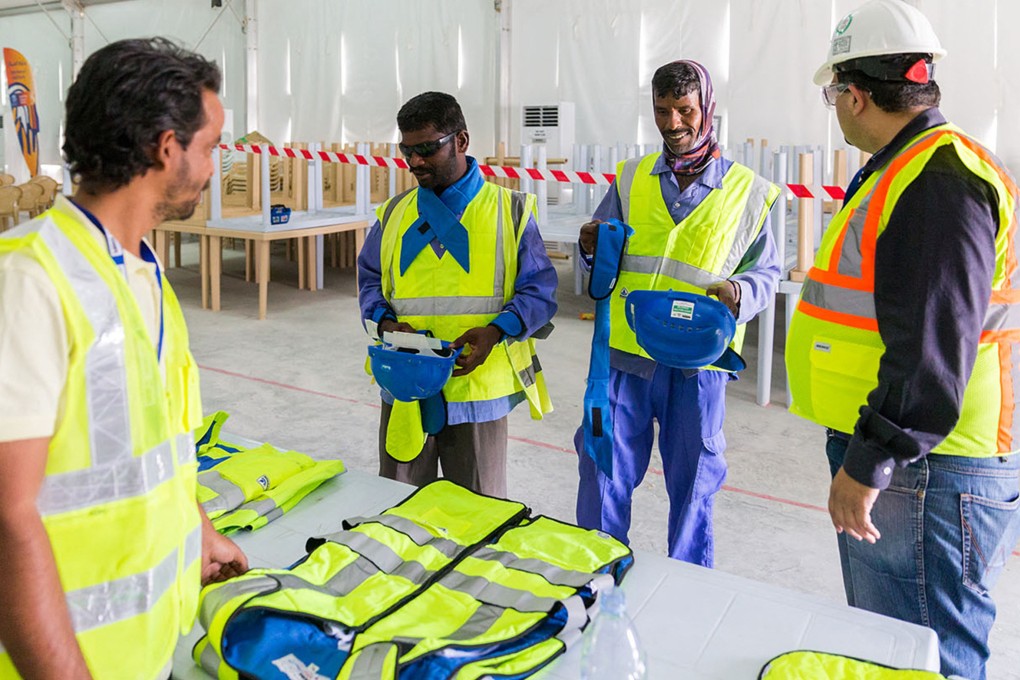Clothes with air conditioning built in? How demand for wearable cooling technology is ‘growing enormously’, and the start-ups making it
- As the world heats up, start-ups from the West and Asia are developing clothes that cool through evaporation, heat reflection, and inbuilt air conditioning
- These garments are especially necessary for outdoor workers, but their creators expect cooling tech will be adopted by mainstream fashion brands in the future

Every morning, thousands of construction workers in Qatar start their day by soaking their uniforms in water.
The two-minute ritual begins an important process: when the workers are toiling outside – often at summer temperatures above 48 degrees Celsius (120 degrees Fahrenheit) – their uniforms can cool skin temperature by as much as eight degrees Celsius, an effect that lasts for up to seven hours.
The uniforms are made by British start-up Techniche UK, which brands them as StayQool suits. Constructed from an outer layer of specially designed mesh, plus a waterproof inside layer, the suits absorb and remove heat through evaporation.
They’re also adjustable: workers can add or remove a cooling collar or wrist cuff as needed.

In the United States, work is under way to commercialise wearable technology that mimics air conditioning, while scientists in China are working on highly reflective fabric. With more heat and more heatwaves expected in the years ahead, cooling is becoming the holy grail for garment makers.